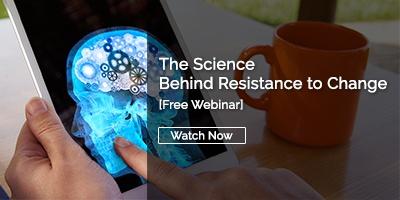The pundits, pollsters, and people around the world are confused about the US Presidential election, but maybe we shouldn't be; how the brain operates explains a lot.
Our brain draws a conclusion to make sense of its world. That story is based on an interpretation of its observations filtered through the lens of what I call its sorting criteria - the parameters for success and consequences of failure unique to that circumstance.
The brain hones in on what matters most at the time. What you look for depends on your brain's sorting criteria, so what you ‘see’ is what you look for. This explains why two people might see the same thing so differently.
The brain operates in two contiguous, non-overlapping yet interactive spheres. One contains processing you are aware of - deliberating, analyzing, and what we think of as decision making. Here you compile a spreadsheet of pros and cons. If the decision rests upon ‘running the numbers,’ so to speak, if something costs more or less, or if the number is higher or lower, then the decision can be made here.
But decisions that involve a value judgment between worthwhile but competing options occur outside awareness in the Hidden Brain. Here the sorting criteria are prioritized and applied to craft the story.
Each of us comes with a pre-packaged prioritization of sorting criteria. This represents a person's worldview and ideology - beliefs about how the world works and the guidelines to navigate through it. The Hidden Brain starts here, dismisses less impactful criteria, and generates a story and decision based on those that remain. It does not use language to share its choices - rather it uses feelings, emotions, and hunches. The working prefrontal cortex then assembles the ‘facts,' experiences, and language that rationalizes the choice as the best available option. In other words, you have no access to how these value judgments are actually made; you just ‘know.’
Wouldn't it be great to know exactly why you feel the way you do? But we can’t always know; we really have no idea what goes on in the Hidden Brain.
In this election, it’s safe to say that both candidates were seen as flawed by the majority of people. Trying to reconcile these flaws against their worldview and ideology left voters seriously challenged to prioritize criteria and make a choice that felt ‘right.’ People did not 'know' enough to make a decision that felt ‘good.’
Brains were pushed beyond their limits trying to deselect among conflicting criteria in order to generate a story that people could live with. How could a person of strong faith and principles reconcile a candidate who so openly violated these precepts? How do you support a candidate who doesn’t appear trustworthy? Yet, to make a choice, voters did indeed disregard and overlook some of their own important sorting criteria to justify and defend their choice as the best option.
For the undecided voters who could not reconcile the conflicting sorting criteria, their Hidden Brains ultimately landed on the conclusion of ambivalence. They needed to 'know' more, and the list of pros and cons in the prefrontal cortex did not have that 'data.'
For them, the prioritization came clear by what they did. The brain does not work well on hypotheticals, but given a concrete example, it will tell you clearly how you feel. Entering the voting booth took the decision from hypothetical to concrete, forcing the brain to make a choice. And in that moment, the brain prioritized its list. It had to value some criteria over others. A vote was cast.
Your organization is no different. People have an opinion and a story based on their worldview and how they observe the circumstances, prioritizing what matters so they can make choices to be successful and avoid failure. They feel good, or bad, or ambivalent about a proposal. Once put into action, though, how they feel comes clear. Which vote do they cast - adopt or resist; participate and engage or check out? Glass half full or glass half empty? Sometimes, it is impossible to know how someone - even yourself - prioritizes sorting criteria until you have to act.
This explains why the concept of continuous improvement is so powerful. Unlike an election, it provides a platform to try without an irretrievable commitment. Find what works and do more of that. Find what doesn't work so well and deselect that. Step by step, zero in on the best way to achieve what truly matters. Acknowledge that each and every situation differs from prior experience. Your story, your explanation, your rationalization are just the starting point, not the ending point. Start with ideology, but don't stop there.
When ideology and story become immovable, when the resulting choice becomes irretrievable, the brain loses an opportunity to consider all that really matters. This was well demonstrated in the Berns study(previous post): a person with a strongly held view processes in a different area of the brain compared with someone entertaining other possibilities. Such an individual is not in the frame of mind to engage in the work and spend the energy to find the better option. As each party defends their choice and resists any other, the result is 'dueling solutions,’ a dead end, a quagmire, and a sure path to nowhere.
There are always options. We just can't always 'see' them. It depends on how the sorting criteria are prioritized. Unless you commit to seeking, acknowledging, and honoring all the sorting criteria in a given situation; unless you give the brain an opportunity to prioritize among them, unless you work with the brain and not against it, how will you ever know how you really feel?
Heck, you might even learn something you weren't aware of. You might discover an option that works even better than the choice you seem so sure about. You might actually land on an ideal choice, one that works and is workable. And it may just save you from the apparently irretrievable 'dueling solutions.'
About the Author
Check out this page for more posts by this author.
 Mark Jaben is a residency trained, board certified Emergency Physician with over 25 years of clinical experience. After 20 years in a single hospital group, he has been doing independent emergency medicine practice for the past 7 years in the community setting in emergency departments ranging from 5000- 75,000 annual visits and has experience in hospitals, Indian Health Service facilities, office practices, and EMS services.
Mark Jaben is a residency trained, board certified Emergency Physician with over 25 years of clinical experience. After 20 years in a single hospital group, he has been doing independent emergency medicine practice for the past 7 years in the community setting in emergency departments ranging from 5000- 75,000 annual visits and has experience in hospitals, Indian Health Service facilities, office practices, and EMS services.
His soon-to-be-released book, Free the Brain: Overcoming the Struggle People and Organizations Have With Change, takes a look at what neuroscience research says about how the brain operates and provides some real insight into why organizations do, or don’t, function so well. In addition to supporting hospitals in their efforts to improve their delivery of quality patient care, his particular interests include the application of Lean principles to medical decision making and to individual work. He was included in A Factory of One, by Dan Markovitz, the 2012 Shingo prize-winning book on this topic. Mark has written extensively about what it really takes to engage people in change efforts and has presented internationally on these topics. His experience includes EMR development and implementation, facility design, regional health delivery, and the interface between different hospital departments as well as between different organizations.



Add a Comment